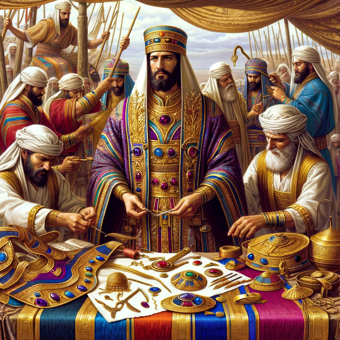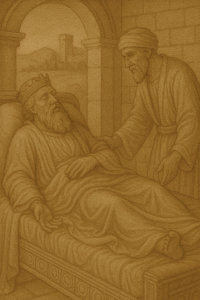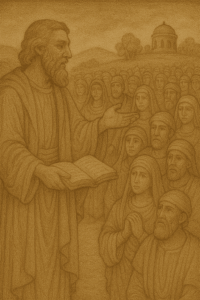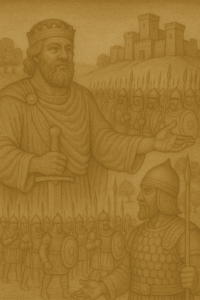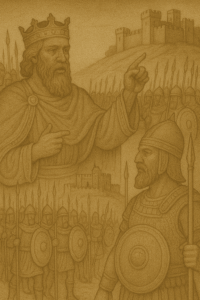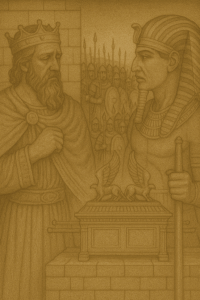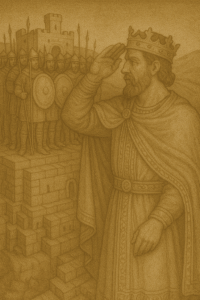Adorned with the Glory of God: Fashioning the Priestly Garments.
In the pages of Exodus, chapter 28 unveils the meticulous instructions for crafting the priestly garments, transforming the priests into visible representations of God’s glory and messengers of His presence among the Israelites. These garments, adorned with symbolism and craftsmanship, served as sacred attire for the priests’ role in the Tabernacle.
The Ephod: A Vest of Divine Authority.
The Ephod, a sleeveless vest worn by the High Priest, was the most elaborate and symbolic garment. It was crafted from gold, blue, purple, and scarlet linen, interwoven with fine linen and embroidered with gold thread and precious stones. The Ephod symbolized the priest’s authority as a mediator between God and the people.
The Breastpiece of Judgment: A Display of God’s Law.
The Breastpiece of Judgment, a square piece of gold adorned with various stones, was attached to the Ephod. It served as a reminder of God’s law and His role as the judge of all. The stones represented the twelve tribes of Israel, symbolizing God’s guidance and protection over His people.
The Tunic of Fine Linen: An Emblem of Purity and Holiness.
The Tunic of Fine Linen, worn underneath the Ephod, was made of fine linen, symbolizing the priest’s commitment to purity and holiness. It was a reminder of the Israelites’ separation from the profane and their dedication to living in accordance with God’s standards.
The Turban: A Sign of God’s Presence.
The Turban, the final layer of the priest’s attire, was made of fine linen and adorned with blue thread. It symbolized the priest’s role as a representative of God’s presence among the people. The blue thread represented the heavens, reminding the priest that he served as a bridge between the earthly realm and the divine.
Transforming the Priests into Vessels of Holiness.
The elaborate and symbolic priestly garments transformed the priests into visible representations of God’s glory and messengers of His presence among the Israelites. They served as reminders of the priests’ sacred duties and the importance of maintaining a holy relationship with God.
Applications in Modern Society
The priestly garments of Exodus 28 offer enduring lessons for our spiritual lives. They remind us of the importance of cultivating a sense of holiness in our own lives, seeking to live in a way that reflects God’s character and embodying His values. We can strive to be vessels of God’s light and grace in the world, just as the priests were called to represent God’s presence among the Israelites.
Conclusion
Exodus 28’s meticulous instructions for crafting the priestly garments reveal the Israelites’ deep reverence for God and their desire to create a sacred space for His presence. The details of these garments echo through the ages, reminding us of the power of symbols and the importance of living lives that reflect God’s holiness
